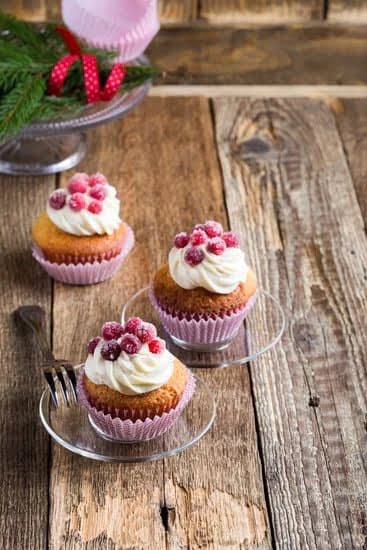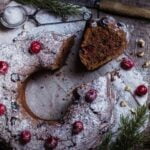How long will a decorated cake last? This is a common question that arises when preparing or purchasing a beautifully adorned cake for a special occasion.
Whether it’s for a birthday, wedding, or other celebration, understanding the shelf life of a decorated cake is crucial to ensure its quality and freshness. In this article, we will explore the factors that affect the longevity of decorated cakes, different types of decorations and their impact on shelf life, proper storage techniques, signs of spoilage, and tips for preserving the freshness of a decorated cake over time.
Knowing how long a decorated cake will last is essential for anyone who wants to ensure that their cake not only looks stunning but also tastes delicious. From the ingredients used to create the cake to the storage conditions and type of decoration added, various elements can influence its shelf life. By understanding these factors and implementing proper preservation techniques, you can extend the lifespan of your decorated cake and enjoy it for longer.
Throughout this post, we will delve into the different types of decorated cakes, including styles and designs that can impact their longevity. Additionally, we will provide detailed information on the best methods for storing a decorated cake to maintain its freshness. By learning how to recognize when a cake has gone bad and employing expert advice for prolonging its lifespan, you can ensure that your beautifully adorned creations remain at their best for as long as possible.
Factors That Affect the Shelf Life of a Decorated Cake
When it comes to the shelf life of a decorated cake, several factors can influence how long it will stay fresh. One of the primary elements that can affect the longevity of a cake is the type of ingredients used in its preparation.
For example, cakes made with perishable dairy products or fresh fruit fillings may not last as long as cakes made with preservatives or stabilized icings. Additionally, the ratio of fat and sugar in the cake can also impact its shelf life.
The storage conditions in which a decorated cake is kept also play a crucial role in determining its freshness. Cakes stored at room temperature are likely to have a shorter shelf life compared to those refrigerated or frozen. Proper ventilation and protection from direct sunlight are also important factors to consider when storing a decorated cake, as exposure to air and light can accelerate the degradation process.
Furthermore, the type and amount of decoration on a cake can influence how long it will last. Some decorations, such as fresh flowers or delicate sugar sculptures, may wilt or melt over time, leading to changes in texture and flavor. On the other hand, certain decorations like fondant or gum paste can act as protective barriers, extending the cake’s shelf life.
| Factors Affecting Shelf Life | Impact |
|---|---|
| Type of ingredients | Dairy products may shorten shelf life; Preservatives may extend shelf life |
| Storage conditions | Room temperature vs refrigeration or freezing; Protection from air and sunlight |
| Type of decoration | Fresh flowers may wilt; Fondant or gum paste may act as protective barriers |
Types of Decorated Cakes
When it comes to decorated cakes, there are countless styles and designs to choose from. From fondant-covered masterpieces to simple buttercream creations, the type of decoration on a cake can have a significant impact on its shelf life. Certain designs may require specific ingredients or have a shorter window of freshness due to their intricate details.
Fondant cakes, for example, are known for their smooth and flawless appearance, but they tend to have a shorter shelf life compared to buttercream cakes. This is because fondant tends to dry out faster and can become stiff over time, leading to a less desirable texture. On the other hand, buttercream cakes with simple decorations may have a longer shelf life due to the flexibility and moisture of the frosting.
Additionally, certain types of decorations such as fresh fruits or whipped cream rosettes should be taken into consideration when determining how long a decorated cake will last. Fresh fruits can contribute extra moisture that may shorten the lifespan of the cake, while whipped cream can wilt if not stored properly.
Understanding how different styles and designs of decorated cakes can impact their longevity is essential for both professional bakers and home decorators. By taking these factors into account, individuals can make informed decisions about the types of decorations they use and how they store their creations in order to maximize shelf life.
| Types of Decorated Cakes | Shelf Life Impact |
|---|---|
| Fondant-covered | Shorter due to faster drying out |
| Buttercream with simple decorations | Longer due to flexibility and moisture retention |
| Fresh fruits or whipped cream rosettes | Potential moisture addition or wilting if not stored properly |
Proper Storage Techniques
When it comes to extending the shelf life of a decorated cake, proper storage techniques are essential. The way you store your cake can have a significant impact on how long it will stay fresh and tasty. Here are some detailed tips for storing your decorated cake to ensure its longevity:
- Refrigeration: One of the best methods for prolonging the freshness of a decorated cake is to refrigerate it. This is especially important if your cake contains perishable ingredients such as cream or custard fillings. To refrigerate a decorated cake, cover it with plastic wrap or place it in an airtight container to prevent drying out.
- Freezing: Freezing your decorated cake can also help preserve its taste and texture. Before freezing, make sure to fully wrap the cake in plastic wrap to protect it from freezer burn. You can also place the wrapped cake in a resealable plastic bag for extra protection. When ready to enjoy the frozen cake, simply thaw it in the refrigerator overnight before serving.
- Avoid Moisture: Excess moisture can cause decorations and frosting to become soggy or runny. To prevent this from happening, make sure your cake is completely cooled before wrapping and storing it. Additionally, avoid placing the cake in a moist environment or directly on refrigerator shelves where condensation may occur.
By following these proper storage techniques, you can significantly increase the lifespan of your decorated cake and ensure that it stays fresh and delicious for as long as possible.
Remember that regardless of how well you store your decorated cake, there will come a point when it is no longer safe to eat. In our next section, we will discuss signs that indicate when a decorated cake has gone bad and should be discarded.
Signs That a Decorated Cake Has Gone Bad
When it comes to enjoying a decorated cake, it’s essential to know how long it will last and how to recognize when it has gone bad. This section will educate readers on the signs that a decorated cake may no longer be safe to eat, including visual cues and changes in texture or smell.
Visual Cues
One of the most obvious signs that a decorated cake has gone bad is mold growth. If you notice any fuzzy green, white, or black spots on the surface of the cake, it should be discarded immediately. Additionally, keep an eye out for any discoloration or darkening of the cake, as this can indicate spoilage. Cracked or sunken areas on the cake can also be a sign that it is no longer fresh.
Changes in Texture
Another way to determine if a decorated cake has gone bad is by assessing its texture. A fresh cake should be moist and have a soft, fluffy texture. If you notice any dryness, hardness, or sogginess in certain areas of the cake, it may be an indication that it has deteriorated. Additionally, if the frosting or icing on the cake appears to be separating or becoming slimy, it is likely no longer safe to consume.
Changes in Smell
Finally, changes in the smell of a decorated cake can also signal that it has gone bad. Freshly baked cakes have a delightful aroma that indicates their quality. If you detect any sour or unpleasant odors emanating from the cake, it is best to err on the side of caution and not consume it.
By being aware of these visual cues and changes in texture or smell, readers can confidently assess whether a decorated cake is still safe to eat without risking foodborne illness.
Preserving the Freshness of a Decorated Cake
When it comes to preserving the freshness of a decorated cake, there are several strategies that can be employed to maintain its quality over time. Whether you are a professional baker or simply want to ensure that your homemade creation stays fresh for as long as possible, these suggestions can help extend the shelf life of your cake.
One important factor in maintaining the quality of a decorated cake is the type of ingredients used in its preparation. Choosing high-quality, fresh ingredients can make a significant difference in how long the cake will stay fresh. Opting for natural preservatives such as lemon juice, vinegar, or certain types of sugar can also help extend the shelf life of the cake without compromising its taste or texture.
Additionally, protective measures can be taken to safeguard the freshness of a decorated cake. For example, using a thin layer of simple syrup on each cake layer before assembling and frosting the cake can help retain moisture and prevent it from drying out. Another protective measure is using fondant as a decorative element on the surface of the cake, as it acts as a barrier and helps preserve the moisture within the cake itself.
Furthermore, carefully choosing and applying decorative elements can impact how long a decorated cake will remain fresh. For instance, fresh fruits and flowers should be added just before serving to avoid them spoiling and affecting the overall freshness of the cake. By being mindful of these suggestions when creating and storing your decorated cakes, you can help ensure that they maintain their quality for an extended period.
- Use high-quality, fresh ingredients
- Incorporate natural preservatives into your recipes
- Apply protective measures such as simple syrup or fondant
- Be mindful of when and how you add delicate decorative elements
By following these guidelines, you can significantly prolong the freshness and quality of your beautifully decorated cakes.
Extending the Shelf Life of a Decorated Cake
When it comes to extending the shelf life of a decorated cake, there are several expert tips and techniques that can help ensure the cake stays fresh for as long as possible. By following these guidelines, you can enjoy your beautifully decorated cake for an extended period of time without worrying about it spoiling.
Proper Packaging
One of the most important factors in extending the shelf life of a decorated cake is proper packaging. Using appropriate cake boxes or containers that are specifically designed for cakes can help protect the cake from outside elements and prevent it from drying out too quickly. It’s important to make sure that the packaging is airtight to maintain the freshness of the cake.
Refrigeration Techniques
Refrigeration can be an effective way to prolong the lifespan of a decorated cake, especially if it contains perishable ingredients such as cream or fruit fillings. However, it’s essential to wrap the cake tightly with plastic wrap or aluminum foil before placing it in the refrigerator to prevent moisture loss and absorption of other odors from the fridge.
Handling Tips
Proper handling is crucial in preserving the freshness of a decorated cake. When transporting or serving the cake, it’s important to use gentle and careful handling techniques to avoid damaging the decorations or causing any unnecessary shifts in the structure of the cake. Additionally, keeping the cake away from direct sunlight and extreme temperatures can also help prolong its shelf life.
By following these expert tips and techniques for packaging, refrigeration, and handling, you can significantly extend the shelf life of your decorated cake and continue to enjoy its beauty and deliciousness for an extended period of time.
Conclusion
In conclusion, it is evident that the shelf life of a decorated cake can be influenced by various factors, including ingredients, storage conditions, and types of decorations. To ensure that a decorated cake stays fresh for as long as possible, it is crucial to pay attention to these details and take proper care of the cake. Proper storage techniques, such as refrigeration or freezing, can significantly extend the lifespan of a decorated cake.
Additionally, being aware of the signs that indicate a cake has gone bad is essential for maintaining food safety. By educating themselves on visual cues and changes in texture or smell that signal spoilage, readers can make informed decisions about whether a decorated cake is still safe to consume.
Furthermore, readers are encouraged to explore different methods for preserving the freshness of their decorated cakes. Whether it’s using certain ingredients or employing special packaging and handling tips, there are several ways to prolong the lifespan of a cake.
By following expert advice and implementing these techniques, individuals can enjoy their beautifully decorated cakes for longer periods. Ultimately, with the right knowledge and care, anyone can ensure that their decorated cakes stay fresh and delicious for as long as possible.

Welcome to our cake decorating blog! My name is Destiny Flores, and I am the proud owner of a cake decorating business named Cake Karma. Our mission is to provide delicious, beautiful cakes for all occasions. We specialize in creating custom cakes that are tailored specifically to each customer’s individual needs and tastes.





